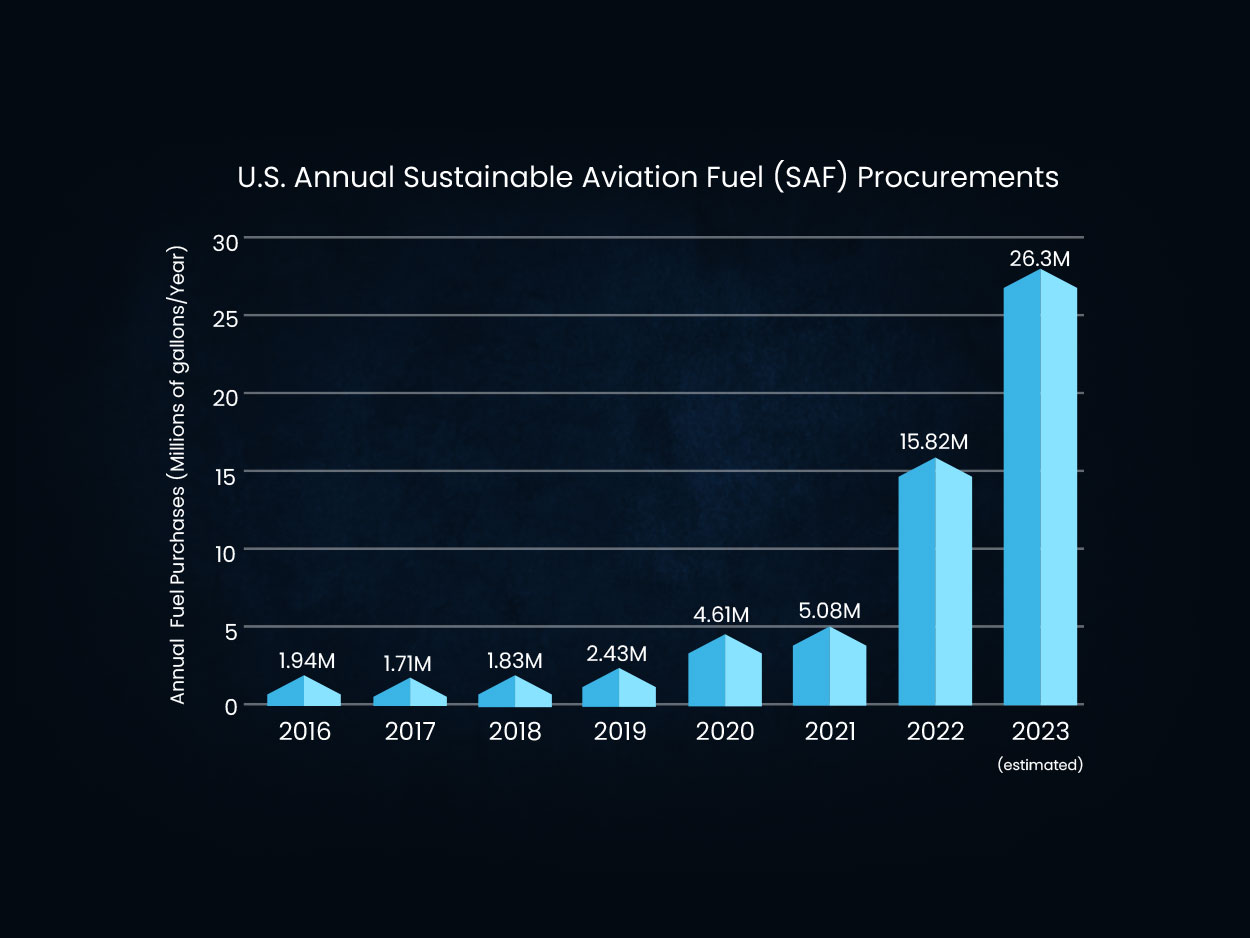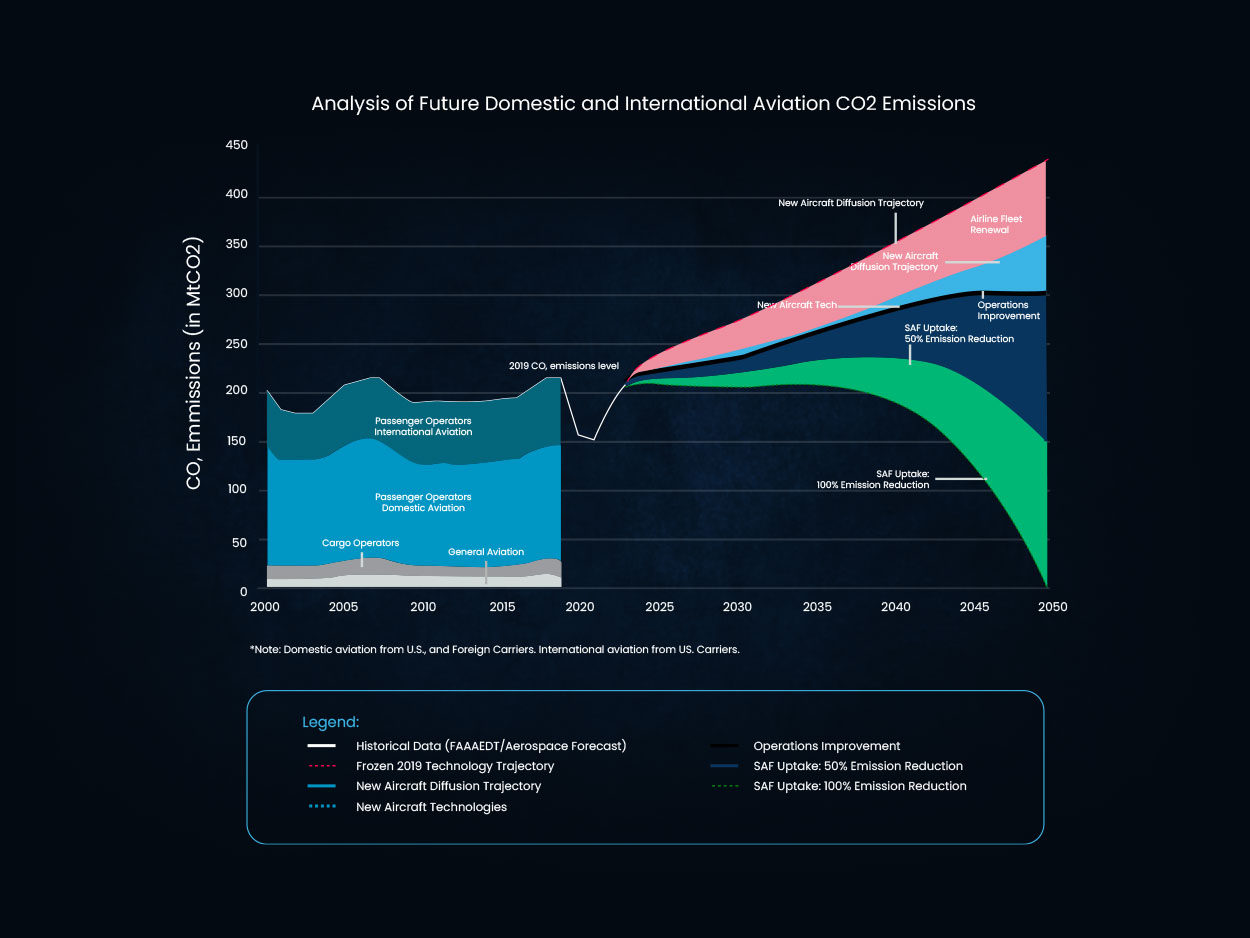Our Blog
How Can Sustainable Practices Benefit Business Aviation?
21 October 2024
| By Just Aviation TeamSustainable business aviation is not just a conceptual initiative but an integral component of modern aviation management. The transition towards sustainable practices involves a multilayered approach that includes advanced technological systems, optimized operational procedures, and compliance with stringent regulatory frameworks. Below are the core benefits, examined through the lens of highly operational principles relevant to flight operators, business aircraft, and their associated systems.
Enhanced Reputation for Optimized Operations
Operators need to differentiate their services not only through luxury and efficiency but also by adopting environmentally responsible practices. Reputation among stakeholders—clients, industry partners, and regulatory bodies—is increasingly tied to the operator’s commitment to sustainability.
Business jets such as the Gulfstream G700 and Dassault Falcon 8X utilize advanced avionics systems with optimized fuel management algorithms integrated into the flight management system (FMS). This allows real-time optimization of flight paths using Required Navigation Performance (RNP) procedures, thereby reducing unnecessary fuel burn during en-route navigation and approach phases.
The auxiliary power unit (APU), a significant contributor to ground-level emissions, can be supplemented by ground power units (GPU) or battery-powered alternatives. The use of sustainable aviation fuel (SAF) further enhances an operator’s reputation, as SAF reduces life cycle CO2 emissions by up to 80%, while seamlessly integrating with existing fuel systems due to its chemical compatibility with Jet A-1.
- 65% of the reduction in emissions needed by aviation to reach net zero CO2 emissions by 2050 is expected to come from Sustainable Aviation Fuel (SAF).
- Business aviation contributes only 0.04% of global emissions, highlighting its relatively low environmental impact compared to other sectors.
- The FAA aims to expand SAF use to 3 billion gallons per year by 2030 and achieve 100% SAF usage by 2050.
- The aviation sector’s share of U.S. CO2 emissions have remained relatively constant at about 2.7% of total domestic emissions, despite increased passenger traffic .
Sources: FAA
Cost Savings
Sustainability initiatives often translate into tangible cost reductions, directly benefiting operational budgets. Optimizing aircraft systems for fuel efficiency, maintenance, and ground handling leads to lower operating costs over the aircraft’s lifecycle.
Modern business aircraft such as the Bombardier Global 7500 utilize predictive maintenance systems powered by Health and Usage Monitoring Systems (HUMS) and Aircraft Communications Addressing and Reporting System (ACARS) to prevent unscheduled maintenance events. By analyzing real-time data from key systems—engines, avionics, landing gear—these predictive systems reduce downtime and improve operational efficiency, directly leading to cost savings.
Additionally, implementing continuous descent operations (CDO) and optimized profile descent (OPD) procedures during approach significantly reduces fuel consumption during landing. In tandem, high-efficiency winglets and advanced materials like carbon composites in the airframe reduce drag and contribute to a 5-10% improvement in fuel efficiency over conventional designs, leading to long-term operational savings.
- The aviation industry has improved fuel efficiency by approximately 39% from 2005 to 2019.
Customer Satisfaction
Customer satisfaction is influenced by both the quality of service and an operator’s environmental impact. High-profile clients increasingly prefer services that align with their own corporate sustainability goals, while also maintaining superior performance and comfort.
Aircraft such as the Embraer Praetor 600 leverage active noise-canceling systems and optimized cabin pressurization to provide a more comfortable and quieter flight experience, while reducing the energy demand on cabin systems. The use of eco-friendly materials in cabin interiors, including sustainable woods, non-toxic adhesives, and recyclable composites, demonstrates a commitment to sustainability without compromising luxury or quality. Additionally, performance-based navigation (PBN) systems enable efficient flight routings that shorten travel times, reducing overall emissions while enhancing the client’s experience through smoother and faster flights.
Regulatory Compliance
Regulatory bodies such as the International Civil Aviation Organization (ICAO) and the European Union Aviation Safety Agency (EASA) have established strict guidelines, including the Carbon Offsetting and Reduction Scheme for International Aviation (CORSIA) and EU Emissions Trading System (ETS), aimed at reducing the sector’s carbon footprint.
Advanced flight operations must integrate Electronic Flight Bags (EFB) with real-time emissions tracking to ensure compliance with ICAO’s CORSIA requirements. Aircraft equipped with next-generation avionics and SATCOM systems can automatically upload and report fuel consumption and emissions data post-flight to central servers, ensuring accurate compliance with regulatory requirements.
For operators flying into Europe, compliance with the EU ETS involves meticulous management of emissions allowances. Operators flying aircraft such as the Cessna Citation Longitude can integrate Flight Data Monitoring (FDM) systems to analyze fuel burn and emissions data across all phases of flight, while Wingtip devices like the Split Scimitar Winglets further aid in reducing drag and ensuring optimal fuel use, contributing to regulatory adherence.
Moreover, the adoption of hybrid-electric propulsion systems in newer aircraft models, paired with the ability to perform zero-emission taxiing, directly addresses impending regulatory frameworks focused on reducing ground-level emissions.
Fuel Efficiency for Flight Operations
Fuel efficiency is a cornerstone of sustainable aviation practices. It involves optimizing both the aircraft’s design and operational procedures to minimize fuel consumption and associated emissions.
Modern business aircraft, such as the Dassault Falcon 6X and the Gulfstream G600, are equipped with advanced engine technologies like Pratt & Whitney’s PurePower PW800 series engines, which feature variable fan blade angles and high bypass ratios. These advancements improve thermal efficiency and reduce specific fuel consumption (SFC).
In addition, operators employ Performance-Based Navigation (PBN) systems and Dynamic Airborne Rerouting (DARR) capabilities to optimize flight paths. This ensures minimal deviations and more efficient routing, reducing fuel burn. Aircraft equipped with Integrated Flight Decks use real-time weather data and air traffic management (ATM) systems to adjust flight profiles dynamically, avoiding inefficient detours and reducing fuel consumption.
Wingtip devices, such as Sharklets and Blended Winglets, further enhance aerodynamic efficiency by reducing drag, which translates to lower fuel consumption. The integration of advanced flight management systems (FMS) allows for precise optimization of flight profiles and speeds, ensuring the most efficient use of fuel throughout the flight.
- New aircraft and engine technologies are expected to deliver a 30% improvement in fuel savings compared to current planes.
- The aviation industry has committed to increasing fuel efficiency by 2% per year between 2020 and 2030.
Carbon Offset Programs for Business Aviation
Carbon offset programs for business aviation allow operators to counterbalance their carbon emissions by investing in environmental projects that reduce or capture greenhouse gasses elsewhere.
To participate in carbon offset programs, operators must accurately measure and report their aircraft’s carbon emissions. This involves integrating Emissions Data Management Systems (EDMS) that utilize ACARS and Flight Data Monitoring (FDM) systems to collect precise fuel consumption and emissions data.
Programs such as CORSIA require operators to engage in third-party verification processes. This involves using Verified Carbon Standard (VCS) methodologies to ensure the accuracy and authenticity of carbon offset projects. Operators invest in initiatives such as reforestation projects, methane capture technologies, and renewable energy projects. Each of these initiatives is validated by Carbon Offset Verification Agencies to ensure that the claimed reductions are real, measurable, and permanent.
Advanced analytics and reporting tools within the Environmental Management Systems (EMS) help operators track their offset contributions and ensure compliance with regulatory standards, such as those established by the ICAO and EASA.
- 19% of the aviation industry’s net-zero emissions goal by 2050 will be achieved through offsets and carbon capture.
Sustainable Aircraft Maintenance
Sustainable aircraft maintenance focuses on reducing the environmental impact of business jets through efficient maintenance practices and the use of eco-friendly materials and processes.
Predictive maintenance technologies such as Health Management Systems (HMS) and Maintenance, Repair, and Overhaul (MRO) analytics tools enable proactive management of aircraft components. These systems use Machine Learning (ML) algorithms to analyze performance data and predict potential failures before they occur, thereby minimizing unnecessary maintenance and extending component life.
- Predictive maintenance through Aircraft Health Monitoring Systems (AHMS) can reduce unscheduled maintenance and downtime by up to 20%
Also, Green MRO practices include the use of non-toxic cleaning agents, recyclable materials, and environmentally friendly lubricants. For instance, the use of low-VOC (volatile organic compounds) cleaning solutions in aircraft cleaning and de-icing operations helps to reduce environmental impact.
Sustainable Ground Handling
Sustainable ground handling involves minimizing the environmental impact of aircraft movements and ground support activities, focusing on reducing emissions and resource consumption during ground handling.
Electric Ground Support Equipment (GSE), including tugs, belt loaders, and air conditioning units, significantly reduces emissions compared to traditional diesel-powered equipment. These electric alternatives operate silently and produce zero tailpipe emissions. Electric taxiing systems can reduce fuel consumption during ground operations by up to 85%
Single-Engine Taxiing (SET) techniques, where applicable, minimize the use of the aircraft’s engines during taxiing, reducing fuel consumption and emissions. This is facilitated by integrating Advanced Taxiing Systems (ATS) that optimize engine usage based on the taxiing phase.
Sustainable Hangar Design incorporates energy-efficient lighting and HVAC systems, along with rainwater harvesting for non-potable uses. Additionally, Automated Refueling Systems ensure precise measurement and minimize spills during refueling operations, reducing the environmental footprint of fuel handling. Noise abatement procedures and restricted engine run-up zones also play a crucial role in mitigating the impact of ground handling on surrounding communities.
At Just Aviation, we are committed to promoting sustainable aviation through innovative solutions and dedicated support. Our focus on sustainability ensures that we implement sustainable practices in the aviation industry, significantly reducing the environmental impact of business jets. We highlight the benefits of sustainable business aviation for your business aviation needs, where we prioritize a greener future for the skies.

